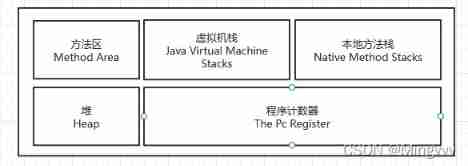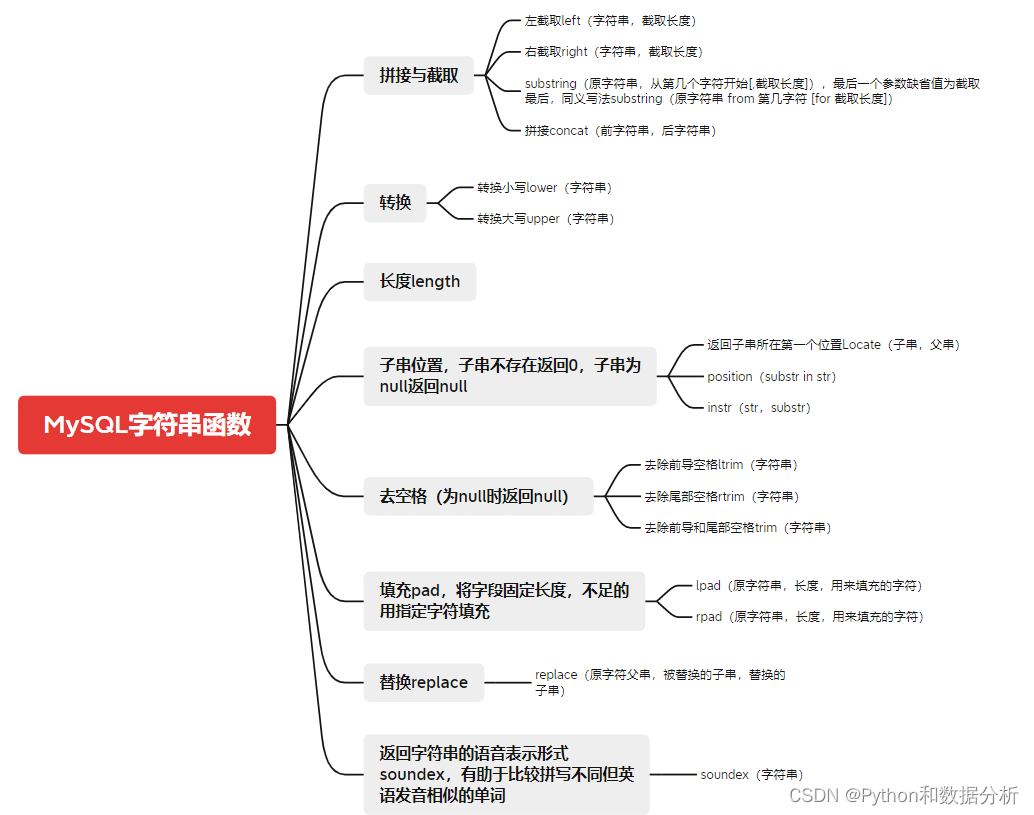当前位置:网站首页>ES6 summary
ES6 summary
2022-07-04 08:12:00 【yibucuo】
Basic data type
- Numbers 、 character string 、 Boolean 、symbol、bigInt、undefined、null
- object
Set usage
It's like an array , But the values of the members are unique , There are no duplicate values .
Only NaN and === Dissimilarity Everything else is the same
var set = new Set(NaN)
set.add(NaN);
set // Set {NaN}
set.size //1
set.delete() // Delete a value The return value indicates whether the deletion is successful
set.has() // Returns a Boolean value Indicates whether there is a value
set.clear() // Clear all items no return value
[...new Set('ababbc')] // ['a','b','c']
You can also use Array.from Untie Set example
let set = new Set(['red', 'green', 'blue']);
for (let item of set.keys()) {
console.log(item);}// red green blue
for (let item of set.values()) {
console.log(item);}// red green blue
for (let item of set.entries()) {
console.log(item);}// ["red", "red"] ["green", "green"] ["blue", "blue"]
Set.prototype[Symbol.iterator] === Set.prototype.values // true So it can be used for...of Loop to get each value
for (let i of set) {
console.log(i);// obtain set Every item inside
}
set.forEach((value, key) => console.log(key + ' : ' + value)) // key and value Have the same value
You can put Set Instances are treated as arrays Conduct map and filter operation Similar to array usage
const p = [item,item,...] // item It must be an object or an array Otherwise, the report will be wrong
const set = new WeakSet(b);
set.add(value)
set.delete(value)
set.has(value)
set.size // undefined No, size and forEach
set.forEach // undefined
Map usage
DOM Nodes as objects data Key , But because objects only accept strings as key names , therefore element Is automatically converted to a string [object HTMLDivElement].
const data = {
};
const element = document.getElementById('myDiv');
data[element] = 'metadata';
data['[object HTMLDivElement]'] // "metadata"
To solve this problem ,ES6 Provides Map data structure . It's like an object
var obj = {
}
var map = new Map([
[obj, '111'],
['key2', '222']
]);
map.get(obj) //111
// There are these ways has get set delete clear size forEach keys values entries
for...map.keys() => The first is obj You can also use [...map.keys()]
for...map.values() => The first is "111" You can also use [...map.values()]
for...map.entries() => The first is [obj,'111'] You can also use [...map.entries()]
for...map.forEach(value, key) => The first one is value by '111' key by obj
WeakMap Only objects are accepted as key names
WeakMap In the face element Is a weak reference , Will not be included in the garbage collection mechanism .
These are the only ways has get set delete
const wm1 = new WeakMap();
Promise
// Ask for sth table data
function requestTableList(){
var p = new Promise((resolve, reject) => {
// Go to the background to request data , This could be ajax, It can be axios, It can be fetch
resolve(res);
});
return p;
}
// The time delay function , Used to time requests 10s
function timeout(){
var p = new Promise((resolve, reject) => {
setTimeout(() => {
reject(' request timeout ');
}, 10000);
});
return p;
}
Promise.race([requestTableList(), timeout()]).then((data) =>{
// Successful callback processing
console.log(data);
}).catch((err) => {
// Failed callback processing
console.log(err);
});
function promiseClick1(){
let p = new Promise(function(resolve, reject){
setTimeout(function(){
var num = Math.ceil(Math.random()*20); // Generate 1-10 The random number
console.log(' Values generated by random numbers :',num)
if(num<=10){
resolve(num);
}
else{
reject(' Number too much 10 About to execute the failed callback ');
}
}, 2000);
})
return p
}
function promiseClick2(){
let p = new Promise(function(resolve, reject){
setTimeout(function(){
var num = Math.ceil(Math.random()*20); // Generate 1-10 The random number
console.log(' Values generated by random numbers :',num)
if(num<=10){
resolve(num);
}
else{
reject(' Number too much 10 About to execute the failed callback ');
}
}, 2000);
})
return p
}
function promiseClick3(){
let p = new Promise(function(resolve, reject){
setTimeout(function(){
var num = Math.ceil(Math.random()*20); // Generate 1-10 The random number
console.log(' Values generated by random numbers :',num)
if(num<=10){
resolve(num);
}
else{
reject(' Number too much 10 About to execute the failed callback ');
}
}, 2000);
})
return p
}
Promise
.all([promiseClick3(), promiseClick2(), promiseClick1()])
.then(function(results){
console.log(results);
})
class Inherit
Parent is superclass Children are subclasses Subclasses inherit superclasses call super In fact, it calls the constructor method of the superclass
class A {
constructor(a) {
this.a = a;
}
}
class B extends A {
constructor(a, b) {
super(a);
this.b = b;
}
}
class C extends B {
constructor(a, b, c) {
super(a, b);
this.c = c;
}
}
console.log(new C(1, 2, 3))//C { a: 1, b: 2, c: 3 }
[ Failed to transfer the external chain picture , The origin station may have anti-theft chain mechanism , It is suggested to save the pictures and upload them directly (img-1K66PnzH-1656645685958)(https://p3-juejin.byteimg.com/tos-cn-i-k3u1fbpfcp/3eda935987e44040b5f12a095e093bb7~tplv-k3u1fbpfcp-zoom-1.image)]
Promise Parallel and serial , as well as await Underlying implementation
Premise code
var query = function (value) {
return new Promise(function (resolve, reject) {
setTimeout(function () {
resolve(value)
}, value)
})
}
parallel Mode one 1 Second output 1000, In another 1 A second output 2000, In another 1 A second output 3000
query(1000).then(v => {
console.log(v)
})
query(2000).then(v => {
console.log(v)
})
query(3000).then(v => {
console.log(v)
})
parallel Mode two Output in three seconds [1000, 2000, 3000]
Promise.all([query(1000),query(2000),query(3000)]).then(v=>{
console.log(v)
})
Serial Mode one Output is 1 Second output 1000, In another 2 A second output 2000, In another 3 A second output 3000
query(1000).then(v => {
console.log(v)
return query(2000)
}).then(v => {
console.log(v)
return query(3000)
}).then(v => {
console.log(v)
})
Serial Mode two Output is 1 Second output 1000, In another 2 A second output 2000, In another 3 A second output 3000
let itor = generator()
itor.next().value.then(value => {
itor.next(value).value.then(value => {
itor.next(value).value.then(value => {
itor.next(value)
})
})
})
await Underlying implementation
const isPromise = function (v) {
if (v !== null && /^(object|function)$/i.test(typeof v)) {
let then;
try {
then = x.then
} catch (err) {
return false
}
if (typeof then === 'function') return true
}
return false
}
function AsyncFunction(generator, ...params) {
return new Promise((resolve, reject) => {
let itor = generator(...params);
const next = v => {
let {
value,
done
} = itor.next(v)
if (done) {
resolve(value)
return
}
if (!isPromise(value)) value = Promise.resolve(value)
value.then(v => {
next(v)
}).catch(reason => {
reject(reason)
itor.throw(reason)
})
}
next()
})
}
AsyncFunction(function* generator() {
let value;
y1 = yield query(1000)
console.log(y1)
y2 = yield query(2000)
console.log(y2)
y3 = yield query(3000)
console.log(y3)
return 'zanlan'
}).then(v => {
console.log(' All requests were successful ', v)
}).catch(reason => {
console.log(' A request failed ', reason)
})
General function implementation
/* Real projects be based on async/awai Can be implemented directly */
/* We are based on promise + generator + AsyncFunction function , What is achieved is async/await Processing mechanism */
/* async/awai yes promise + generator The grammar sugar of */
(async function () {
let value;
try {
value = await Promise.reject('xxx')
console.log(' The first request succeeded ', value)
} catch (err) {
console.log(err)
}
value = await query(2000)
console.log(' The second request succeeded ', value)
value = await query(3000)
console.log(' The third request succeeded ', value)
})()
generator principle
Execute a function as an ordinary function , Whether you can create an instance of this class ?
jquery.fn() // Factory design mode Realization
function* fn() {
// generator Realization ,itor yes fn Instance object of fn Internal code not executed
console.log(this)
return 10
}
let itor = fn()
console.log(itor)
Output window, At output { value:10 , done:true }
function* fn() {
console.log(this)
return 10
}
let itor = fn()
console.log(itor.next())
Output as follows
[ Failed to transfer the external chain picture , The origin station may have anti-theft chain mechanism , It is suggested to save the pictures and upload them directly (img-CghJhoeC-1656645685966)(https://p3-juejin.byteimg.com/tos-cn-i-k3u1fbpfcp/2fabd05724794427a96733e4f03229c2~tplv-k3u1fbpfcp-zoom-1.image)]
function* generator() {
console.log(1)
yield 2
console.log(3)
yield 4
console.log(5)
yield 6
console.log(7)
return 8
}
let itor = generator()
console.log(itor.next())
console.log(itor.next())
console.log(itor.next())
console.log(itor.next())
Output as follows
[ Failed to transfer the external chain picture , The origin station may have anti-theft chain mechanism , It is suggested to save the pictures and upload them directly (img-KdJYJRJQ-1656645685968)(https://p3-juejin.byteimg.com/tos-cn-i-k3u1fbpfcp/14d36e9a5602412f960b520747896c65~tplv-k3u1fbpfcp-zoom-1.image)]
function* generator() {
console.log(1)
let y2 = yield 2
console.log(y2)
console.log(3)
let y4 = yield 4
console.log(y4)
console.log(5)
let y6 = yield 6
console.log(y6)
console.log(7)
return 8
}
let itor = generator()
console.log(itor.next('aa'))
console.log(itor.next('bb'))
console.log(itor.next('cc'))
console.log(itor.next('dd'))
Output is as follows
[ Failed to transfer the external chain picture , The origin station may have anti-theft chain mechanism , It is suggested to save the pictures and upload them directly (img-8zIlIQvg-1656645685970)(https://p3-juejin.byteimg.com/tos-cn-i-k3u1fbpfcp/491da2d576424606bc08c302903c3d14~tplv-k3u1fbpfcp-zoom-1.image)]
function* generator1() {
yield 2;
yield 3;
return 4
}
function* generator2() {
yield 1;
yield* generator1();
yield 5;
return 6;
}
let itor = generator2();
console.log(itor.next())
console.log(itor.next())
console.log(itor.next())
console.log(itor.next())
console.log(itor.next())
Iterator Source code
class Iterator {
constructor(assemble) {
let self = this;
self.assemble = assemble;
self.index = 0;
}
next() {
let self = this;
let assemble = self.assemble;
if (self.index > assemble.length - 1) {
return {
done: true,
value: undefined
}
}
return {
done: false,
value: assemble[self.index++]
}
}
}
General application
let itor = new Iterator([10, 20, 30, 40])
console.log(itor.next())
console.log(itor.next())
console.log(itor.next())
console.log(itor.next())
console.log(itor.next())
The following code can make general objects use for of loop
Object.prototype[Symbol.iterator] = function () {
let self = this
let keys = Object.keys(self).concat(Object.getOwnPropertySymbols(self))
let index = 0
return {
next() {
if (keys.length - 1 < index) {
return {
done: true,
value: undefined
}
}
return {
value: self[keys[index++]],
done: false
}
}
}
}
For class array , Then directly borrow the Symbol.iterator function
var obj = {
0: 'a',
1: 'b',
length: 2
}
obj[Symbol.iterator] = Array.prototype[Symbol.iterator]
for (var value of obj) {
console.log(value)
}
jquery Is an array of classes , Here is jquery The source code to achieve
jQuery.fn[Symbol.iterator] = [][Symbol.iterator];
async && await Interview questions
Two functions are known , Ask questions separately , The results of
var f1 = function f1() {
console.log(1)
return new Promise(resolve => {
setTimeout(() => {
resolve(6)
console.log(5)
}, 2000);
})
}
var f2 = function f2() {
console.log(2)
return new Promise(resolve => {
setTimeout(() => {
resolve(4)
console.log(3)
}, 1000);
})
}
problem 1 The output is :1 5 6 2 3 4
var f = async function () {
console.log(await f1())
console.log(await f2())
}
f()
problem 2 The output is :1 2 3 5
Promise.all([
f1(),
f2(),
])
problem 3 The output is :1 2 3 4 5 6
Promise.all([
(async () => {
console.log(await f1()) })(),
(async () => {
console.log(await f2()) })(),
])
class Inherit
Parent is superclass Children are subclasses Subclasses inherit superclasses call super In fact, it calls the constructor method of the superclass
class A {
constructor(a) {
this.a = a;
}
}
class B extends A {
constructor(a, b) {
super(a);
this.b = b;
}
}
class C extends B {
constructor(a, b, c) {
super(a, b);
this.c = c;
}
}
console.log(new C(1, 2, 3))//C { a: 1, b: 2, c: 3 }
ES5 and ES6 Modular import and export of
// Do not receive objects
require:require('s.css'); //(es5)
improt 's.css' //(es6)
// The recipient
var o = require('s.js'); //es(5)
import o form s.js //(es6)
Export a module object (es5):
module.exports={
add:add,
sub:sub
}
Export a module object (es6):
module.exports={
add,
sub
}
Be careful : In this way, the attribute name and the attribute value variable are the same , Otherwise, write separately
module.exprots={
addFn:add,
sub
}
//es5
module.exports={
addFun:function(x,y){
return x+y;
}
}
//es6
module.exports={
addFun(x,y){
return x+y;
}
}
calc.js There are two functions in :
function add(){
}
function sub(){
}
// Writing a
es5 How to write it :
module.exports.add = add;
module.exports.sub = sub;
Use :
var calc = require('./calc.js');
es6 How to write it :
exprot function add(){
}
exprot function sub(){
}
// Write two
es5:
module.exports = {
add:add,sub:sub};
es6:
exprot default{
add,sub
}
// It means to obtain calc.js All exposed objects in (es6)
import calc from './calc.js'
// Only get calc.js Medium add Method ( Acquisition on demand )
import {
add} from './calc.js'
1、 If... Is used in the module export default {
} Method to export objects
Only through import Object name from ' The module path '
Cannot pass import {
Object name } from ' The module path '
2、 If you want import {
Object name } from ' The module path ' In this way, you can import a property in the object on demand
So you should use export Followed by the name of the object or method to be exported
export function add(){
}
export function substrct(){
}
Then you can use it :
import {
add,substrct} from ' The module path '
Just use... Directly add() The method can
Note that you can't use it directly here : import cacl from ' The module path ' This way, import , Will report a mistake
class Inherit
```typescript
Parent is superclass Children are subclasses Subclasses inherit superclasses call super In fact, it calls the constructor method of the superclass
class A {
constructor(a) {
this.a = a;
}
}
class B extends A {
constructor(a, b) {
super(a);
this.b = b;
}
}
class C extends B {
constructor(a, b, c) {
super(a, b);
this.c = c;
}
}
console.log(new C(1, 2, 3))//C { a: 1, b: 2, c: 3 }
ES5 and ES6 And Object Used methods
es6 Of prototype You can't enumerate
class Person {
constructor(x, y) {
}
toString() {
}
}
console.log(Object.keys(Person.prototype)); //[]
console.log(Object.getOwnPropertyNames(Person.prototype)); //["constructor", "toString"]
function Person1() {
}
Person1.prototype.toString = function () {
};
console.log(Object.keys(Person1.prototype)); //["toString"]
console.log(Object.getOwnPropertyNames(Person1.prototype)); //["constructor", "toString"]
Automatic addition constructor function
class Person {
}
etc. price
class Person {
constructor(x, y) {
}
}
constructor Default return Instantiate objects this, But you can customize
class The function must new To call ,es5 Unwanted new You can also call
class Foo{
constructor(){
return Object.create(null);
}
}
new Foo() instanceof Foo //false
Modify an instance __proto__ Methods , Other examples will also be implicated
class Person {
constructor(x, y) {
this.x = x;
this.y = y;
}
toString() {
return this.x + '--' + this.y;
}
}
let p = new Person(1, 2);
console.log(p.hasOwnProperty('x')); //true
console.log(p.hasOwnProperty('y')); //true
console.log(p.hasOwnProperty('constructor')); //false
console.log(p.hasOwnProperty('toString')); //false
console.log(p.__proto__.hasOwnProperty('constructor')); //true
console.log(p.__proto__.hasOwnProperty('toString')); //true
let p1 = new Person(2, 3);
p1.__proto__.toString = function () {
return 'what fuck?';
};
let p2 = new Person(3, 4);
console.log(p1.toString());//what fuck?
console.log(p2.toString());//what fuck?
class You can customize variables ,Person Only valid inside the constructor , and clafun Is used for external calls
let clafun = class Person {
constructor(x, y) {
this.x = x;
}
toString() {
return this.x + '--' + Person.name;
}
};
let p = new clafun(1);
console.log(p.toString());//1--Person
// var p1 = new Person(1);//Person is not defined
// If you don't use clafun It can be abbreviated as
// If you don't use clafun It can be abbreviated as
let p = new class Person {
constructor(x, y) {
this.x = x;
}
toString() {
return this.x + '--' + Person.name;
}
}(1);
console.log(p.toString());//1--Person
// var p1 = new Person(1);//Person is not defined
class No variable promotion ,let No variable promotion , hypothesis class There is variable promotion , Is an error Foo yes undefined , In fact, there is no error , explain class No variable promotion
{
let Foo=class {
};
class Bar extends Foo{
}
}
this Direction problem of , By default, it points to the instantiated object , But through the method of deconstruction , Then inside the function this It points to the environment because es6 The default is in strict mode , So it points to undefined, There are three solutions
- bind change this The direction of
- Arrow function
- proxy
console.log(this); //Window {postMessage: ƒ, blur: ƒ, focus: ƒ, close: ƒ, parent: Window, …}
class Person {
constructor() {
// this.fun1 = this.fun1.bind(this); // Method 1
// this.fun1 = () => {
// // Method 2
// return this.fun2() + '-------------';
// };
}
fun1() {
console.log(this); // The instantiation call points to instantiation Deconstruction points to the environment ,es6 The default is strict mode , So for undefined
return this.fun2() + '--------';
}
fun2() {
return 'what';
}
}
let p = new Person();
console.log(p.fun1()); //what--------
const {
fun1 } = p;
console.log(fun1()); //fun1 Inside this Point to the running environment Cannot read property 'fun2' of undefined
proxy add to this
function selfish(target) {
const cache = new WeakMap();
const handler = {
get(target, key) {
const value = Reflect.get(target, key);
if (typeof value !== 'function') {
return value;
}
if (!cache.has(value)) {
cache.set(value, value.bind(target));
}
return cache.get(value);
},
};
const proxy = new Proxy(target, handler);
return proxy;
}
const p = selfish(new Person());
class Inherit static Method es6 Only static methods have no static properties
class Foo {
static fun1() {
return '111';
}
}
class Bar extends Foo {
static fun2() {
return super.fun1() + '222';
}
}
console.log(Bar.fun1());//111
console.log(Bar.fun2());//111222
class Declare instantiated properties and methods
class Foo {
constructor() {
this.state1 = {
};
}
state = {
name: 1 };
fun1() {
return 11111;
}
}
console.log(new Foo().hasOwnProperty('state1')); //true
console.log(new Foo().hasOwnProperty('state')); //true
console.log(new Foo().__proto__.hasOwnProperty('fun1')); //true
ES5 and ES6 Of get and set Comparison of methods
ES5
var obj = {
};
Object.defineProperty(obj, 'name', {
get: function () {
console.log(' Visiting name');
return this._name;
},
set: function (val) {
console.log(' Modifying name');
this._name = val;
},
});
obj.name = 10;
console.log(obj);
console.log(obj.name);
// Modifying name
// { _name: 10 }
// Visiting name
// 10
ES6
class Person{
constructor(){
this._name = '';
}
get name(){
console.log(" Visiting name attribute ");
return ` My name is ${
this._name}`;
}
set name(val){
console.log(" Modifying name attribute ");
this._name = val;
}
}
const person = new Person();
person.name = " Dema - Compress ";
console.log(person.name); // First visit set Revisit get
// Modifying name
// Visiting name
// My name is dema - Compress
es7

let a = 7 ** 12
let b = 2 ** 7
console.log(a === Math.pow(7,12)) // true 7 Of 12 Power
console.log(b === Math.pow(2,7))
边栏推荐
- Flask 常用组件
- Using the rate package for data mining
- @Role of requestparam annotation
- 猜数字游戏
- Activiti常见操作数据表关系
- OKR vs. KPI 一次搞清楚这两大概念!
- Advanced MySQL: Basics (5-8 Lectures)
- A method for detecting outliers of data
- Need help resetting PHP counters - PHP
- How to use C language code to realize the addition and subtraction of complex numbers and output structure
猜你喜欢

JVM -- class loading process and runtime data area

Tri des fonctions de traitement de texte dans MySQL, recherche rapide préférée

Azure ad domain service (II) configure azure file share disk sharing for machines in the domain service

What are the work contents of operation and maintenance engineers? Can you list it in detail?

Collections in Scala

墨者学院-PHPMailer远程命令执行漏洞溯源

Moher College webmin unauthenticated remote code execution
![[go basics] 2 - go basic sentences](/img/b1/961615b439d75679a3bb40a60f208d.png)
[go basics] 2 - go basic sentences

Famous blackmail software stops operation and releases decryption keys. Most hospital IOT devices have security vulnerabilities | global network security hotspot on February 14

Common components of flask
随机推荐
Leetcode(215)——数组中的第K个最大元素
Laravel page load problem connection reset - PHP
Leetcode 23. 合并K个升序链表
This monitoring system can monitor the turnover intention and fishing all, and the product page has 404 after the dispute appears
Sqli labs download, installation and reset of SQL injection test tool one of the solutions to the database error (# 0{main}throw in d:\software\phpstudy_pro\www\sqli labs-...)
Technology sharing | MySQL parallel DDL
【性能測試】一文讀懂Jmeter
@Role of requestparam annotation
学习Nuxt.js
PHP session variable passed from form - PHP
A method for detecting outliers of data
Book list | as the technical support Party of the Winter Olympics, Alibaba cloud's technology is written in these books!
[go basics] 2 - go basic sentences
zabbix监控系统邮件报警配置
[go basics] 1 - go go
PCIE知识点-010:PCIE 热插拔资料从哪获取
Conversion of yolov5 XML dataset to VOC dataset
How to send mail with Jianmu Ci
促进OKR落地的工作总结该如何写?
Thesis learning -- time series similarity query method based on extreme point characteristics